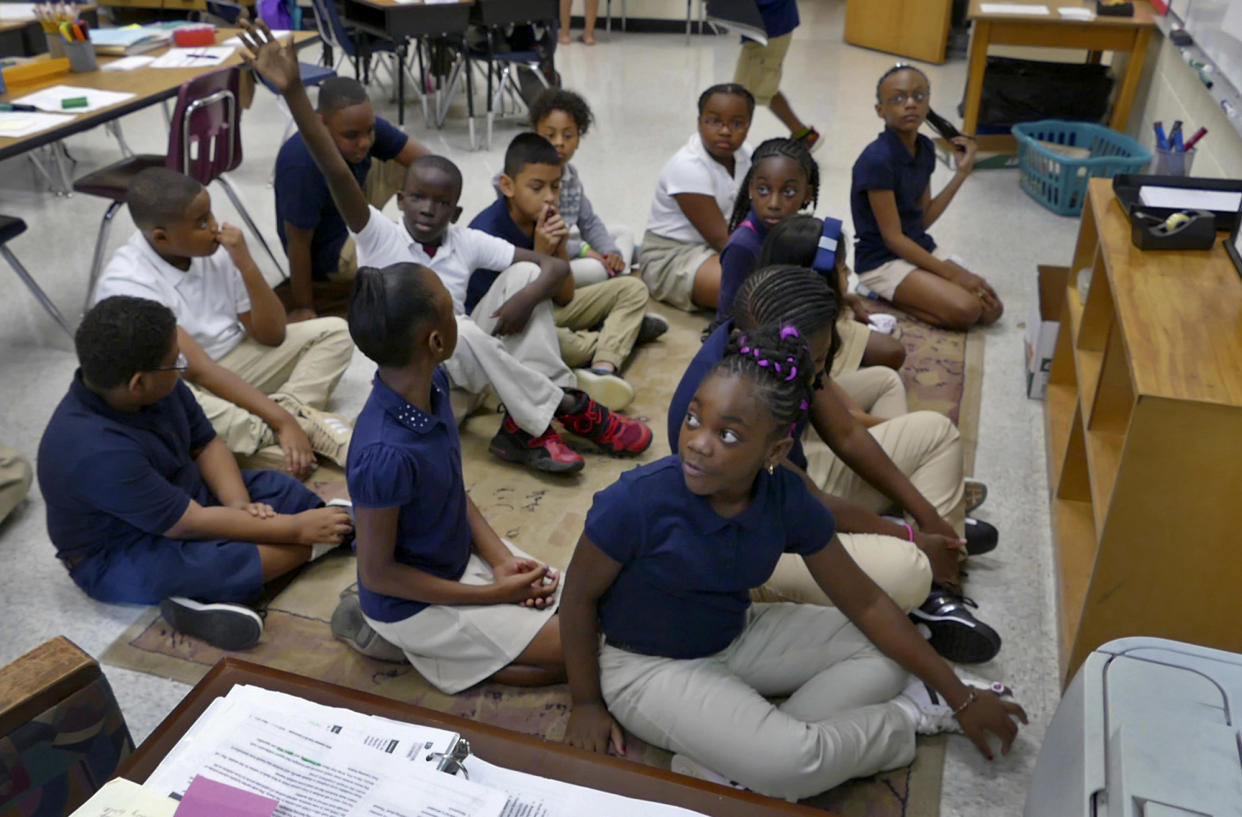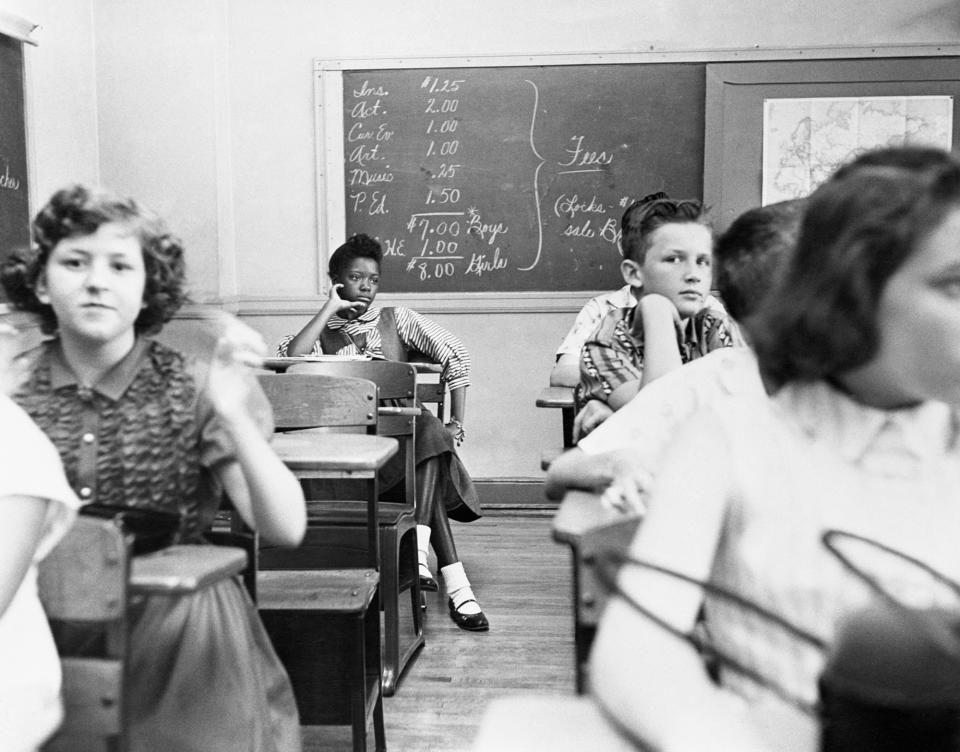A Southern city struggles with the paradoxes of ‘school choice’

When the 146,000 students in the public schools of Charlotte-Mecklenburg, N.C., entered their classrooms last fall, they might have found themselves in a charter school among upper-middle-class students taught by an experienced teacher with a specialized lesson plan — or in a traditional school staffed by first-year teachers, with peers too burdened by the weight of poverty to worry about test scores.
The determining factor, by and large, was whether their parents had the time, resources, connections and know-how to navigate Charlotte’s complex school choice program.
To get their child into one of Charlotte’s popular pre-K Montessori programs, where children “teach” themselves at their own pace, parents must start the application process a full year in advance — meaning nearly two years earlier than registration for regular kindergarten. Information about scholarships to cover the program’s tuition and transportation costs is not widely available. Families without the time or resources to research their options are likely to be left out of the desirable program.
The result is a school system that — after decades of progress — has slipped back to being as racially and economically segregated as it was 40 years ago.
At schools like Bruns Academy — a regular public school, despite its name, where 99 percent of students receive free or reduced-cost lunches, and 89 percent are black — the issue of segregation is being seriously addressed for the first time in years.
Carol Sawyer, an education activist and former Charlotte-Mecklenburg Schools (CMS) parent, is running for the CMS school board on a platform of prioritizing diversity.
“Out of all of the solutions for education reform that have been proposed — you know, these silver-bullet solutions, like having better teachers and having a business model — the least expensive solution that we have consistently have ignored is that of integration,” Sawyer said.
Diversity is a way to equalize the effects of “social capital” — the values, expectations, self-discipline and other intangible qualities imparted by families that predict academic success.
Unlike other potential solutions, integration’s success is proven.

From the beginning of Charlotte’s court-ordered busing program, which operated from 1969 to 2001, ensuring that classrooms were racially and socioeconomically diverse was a priority for Charlotte-Mecklenburg Schools. But a lawsuit by a group of white families ended the court-ordered busing program that made the system one of the most integrated and highest-performing in the nation.
It took only a few years for three decades of progress to be lost. In 2005, North Carolina Superior Court Judge Howard Manning wrote that the system was perpetrating “academic genocide for the at-risk, low-income children.”
Now, the growing Southern metropolis is attempting to make up for lost time.
For students entering CMS schools in the fall, the classroom demographics will look a little different. In a unanimous vote last fall, the school board added socioeconomic status as a factor in student assignment for its charter and magnet schools, and modified zone boundaries to help reduce concentrations of poverty at its traditional schools.
“Among progressives, Donald Trump’s election was a huge wakeup call,” said Richard D. Kahlenberg, a senior fellow at the Century Foundation who helped design CMS’s new diversity initiative. “People are recognizing that we have some genuine threats to our democracy and to our public education system. Part of the reason that Donald Trump was able to be successful in scapegoating minorities is that white people and more affluent people have had little exposure in school to people who come from different backgrounds. Under those circumstances, it’s easy for a demagogue to get away with demonizing people as ‘the other’.”
Prioritizing diversity and bucking the then president-elect’s educational agenda was considered a bold move in the largely Republican state, but the board approved the plan without dissent the day after Trump’s election.

Trump and his secretary of education, Betsy DeVos, have moved the federal education policy in the opposite direction, eliminating a fully funded Obama-era grant program to help school districts like CMS find ways to integrate classrooms and proposing tax credits for families of students who want to attend private schools.
CMS is required to update its district boundaries and reevaluate its student assignment system every six years, but the process is rarely controversial.
According to UNC Charlotte professor Roslyn Mickelson, who also works with CMS, some parents tried to defeat the diversity agenda by threatening to pull their children out of traditional schools, taking advantage of the network of charter schools strategically located to minimize enrollment by poor and minority students. Lake Norman Charter, for example, has a student body that is 77 percent white, and just three percent qualify for free or reduced-cost lunches. Its students score far above average on North Carolina’s end-of-grade tests — exams that only 24 percent of Bruns Academy students pass.
The mayor of one Mecklenburg County town proposed establishing a “business park” of charter schools for local children to attend, to keep them out of the clutches of “diversity.”
Charter schools were originally supported by civil rights activists and educators as alternatives to failing, “hypersegregated” schools, Mickelson said, “but now there are people who embrace charter schools as way to essentially get a private education on the taxpayer’s payroll.”
“The work of a school social worker is troubling enough,” Bruns Academy’s school social worker Barry Sherman said. “But on top of that, when you’re in a school that has virtually the entire student body — basically, in one form or another, struggling, and the families basically are all struggling — that creates a very difficult, to say the least, set of circumstances to deal with in the school setting, when academic excellence and academic achievement are supposed to be the real business that we are about.”
But according to teachers, what students lose out on most is having peers with different life experiences to challenge them — something that doesn’t happen when wealthiest students all attend charter schools.
“There are different bars that are raised — the diversity of thought is part of education — and that doesn’t get to happen in a lot of classrooms that are hypersegregated by race or socioeconomic status,” said Kayla Romero, a former CMS teacher who now works full time as an educational activist.
The lack of diversity has consequences far beyond test scores, Sawyer added. It makes it significantly more difficult for poorer children to move into the middle class later in life.

“Charlotte is now famously ranked 50 out of [the 50 largest cities in America] in economic mobility, and having students socioeconomically and racially isolated amplifies that,” Sawyer said referring to Equality of Opportunity Project’s analysis. “As a society, we can not afford to ignore this issue and pretend that we’ll be fine because my kid is going to a great school and a great college. We are undermining our entire society and our society’s future, not to mention throwing away talent.”
Though skeptical about how much change the new rules will bring about, activists like Romero and Sherman remain hopeful that the city’s rare first step toward increasing diversity will trigger even greater efforts — in Charlotte and across the nation.
“The greatest wish for me would be that Charlotte would take a real strong look in the mirror and recognize that separate and isolated experiences of living are not in step with the world that we’re living in,” Sherman said.
Read more from Yahoo News:


